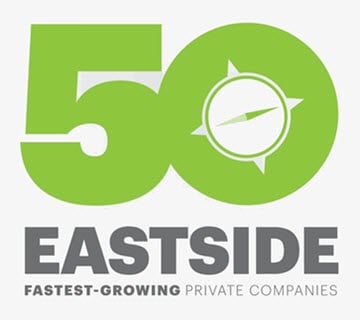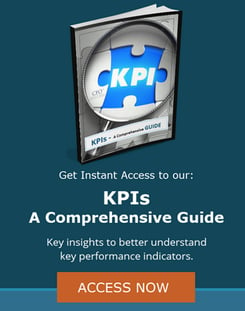 Financial projections are a critical component of a sound business plan. These projections (or “financial forecasts”) are used externally to obtain funding as well as internally to create a strategic growth roadmap with key milestones.
Financial projections are a critical component of a sound business plan. These projections (or “financial forecasts”) are used externally to obtain funding as well as internally to create a strategic growth roadmap with key milestones.
At the core of these projections are logical assumptions for revenue, COGS (cost of goods sold), SG&A (sales, general, and administrative) expenses, capital investments, and cash flow that serve as building blocks for the final figures that result. Because your financial projections rely on these pillars, it is crucial to find a balance with these inputs. Being too conservative or too aggressive with your assumptions will skew the resulting projections, damaging their overall credibility. The goal is to inspire confidence externally as well as internally while maintaining high ethical standards, which requires a balanced approach toward creating assumptions for financial projections.
Use existing financial information, even if it is limited by the newness of your business, to justify these assumptions and inform your financial forecasting process. Your resulting financial projections should include a P&L statement, cash flow statement, balance sheet, capitalization table, and strategic investment plan.
P&L Statement
Investors will be most interested in reviewing your P&L statement to analyze future viability.
Your P&L statement (or “income statement”) should pull in all direct, general, and administrative expense data to predict future profits. Include both revenue drivers and revenue levers in the process. Revenue drivers are the activities that control how income is created via revenue levers. Revenue levers are the ways you earn revenue – including products, services, software licenses, service contracts, sales through channel partners, and the like. For product and service offerings, determine and accurately represent how they will be priced.
Then, remember to include expected gains and losses through new sales and customer churn. This is a crucial step because otherwise, revenue projections can be significantly exaggerated. Remember, even industry-leading businesses have some degree of customer turnover every reporting period.
As a best practice, model various projections to account for a worst-case scenario, best-case scenario, and a middle-ground scenario. If the business will not be profitable at first (and many will not!), determine the projected break-even point.
Where possible, include information on growth year-over-year. Calculate your CAGR (compound annual growth rate) for investors ahead of time to provide an easy metric for them to use when evaluating your proposal. Investors and lenders will want to see steady growth each year to determine business sustainability and scalability.
Cash Flows
When projecting cash flow include your existing sales data, even if it is limited. Factor in cash payments for raw materials and anything else you need to make products or offer services.
Understand your COG (cost of goods) and how they affect cash flow. COGS are any costs directly related to creating your products or services, such as raw materials, labor, packaging, and equipment depreciation. If your COGS are too high at the start, be able to illustrate how improved efficiencies will reduce these costs over time. If you do not have complete COGS information for your business yet, use data from similar businesses that demonstrate equivalent precedent.
There are many reasons that a startup business can have negative cash flow forecasts. If your cash flow projections are negative, determine which changes you can make to turn forecasted cash flow positive or be able to explain this red flag with other positive indicators (as long as they are truthful and reasonable in nature).
For most funding requests, EBITDA (earnings before interest, taxes, depreciation, and amortization) is enough detail to provide for investors. However, if the business will have a long cash cycle or if significant inventory investments are needed to get the business started, more information may be required. An experienced CFO can advise on these additional financial requirements.
Balance Sheet
Investors will want to see that your business can provide a strong ROI (return on investment) while lending institutions will want to see that you can pay them back quickly, which means that your business’s net worth will almost certainly need to be positive to receive funding. Accurately represent assets and liabilities on your balance sheet to give an accurate equity projection. Include not only existing cash but also incoming payments as assets and any debts as liabilities.
Capitalization Table
A capitalization table, also known as a cap table, is a table that shows the equity ownership for a company. The capitalization table is a detailed breakdown of a company’s shareholders’ equity. While a capitalization table is commonly used by startups and early-stage businesses, other types of businesses will also use it.
The term can refer to the way in which any company keeps track of all of the relevant information related to all of its stakeholders (including debt, convertible debt, option, warrant, and derivatives holders) and their claims on the company.
Capitalization tables help private companies maintain the calculation of their market value. In the private market, they are also important for shareholder reporting and new capital issuance marketing.
Cap tables have become more complex and increasingly harder to manage in a spreadsheet. Spreadsheets might limit scalability, could become time-consuming to maintain and susceptible to human error. In recent years, companies are choosing to manage their cap table with automation software. The price of automation software has come down to a point that makes it more accessible to both early stage and growing businesses.
Investment Planning
Lastly, include capital investment projections. Categorize capital investments by category (equipment, inventory, software, etc.) and state the timeframe in which they will be needed. Be able to illustrate how these investments will provide a positive return over their usable lifecycles and are directly correlated to business growth. If investments need to be financed, lay out the time horizon across which they will be purchased.
To be successful, you must be confident in your financial projections – not because you are trying to “sell” the business as more promising than it really is, but because you have put in the work yourself or hired an experienced financial professional to create detailed and sound financial projections.
If you need help calculating your projected cash flow, use our Cash Flow Calculator Tool. This powerful tool offers immediate visibility into your current cash flow needs and provides quick estimates on how changes to COGS, buying or selling assets, or obtaining a loan will affect future cash flows. Find out more today!





